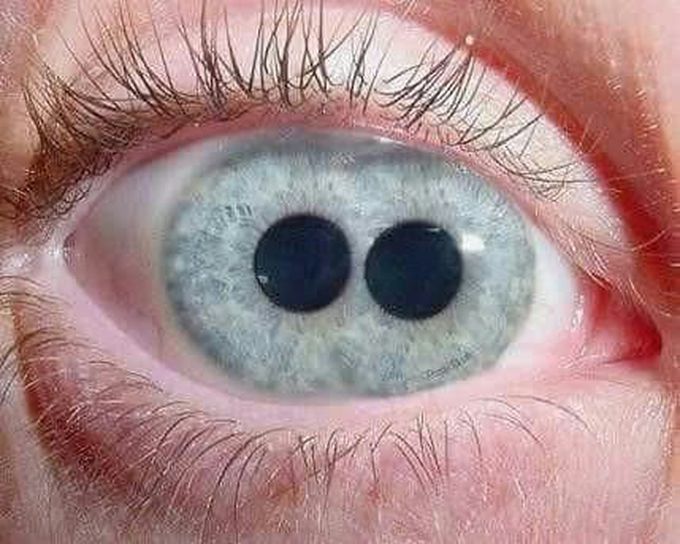

Polycoria
Polycoria is an eye condition that affects the pupils. Polycoria can affect just one eye or both eyes. It’s often present in childhood but may not be diagnosed until later in life. There are two types of polycoria. These types are: True polycoria. You will have two or more separate pupils in one eye. Each pupil will have its own, intact sphincter muscle. Each pupil will individually constrict and dilate. This condition can affect your vision. It’s extremely rare. False, or pseudopolycoria. You have the appearance of two or more pupils in your eye. However, they do not have separate sphincter muscles. In pseudopolycoria, the holes in your iris look like additional pupils. These holes are usually just a defect of the iris and do not cause any issues with your vision. The symptoms of polycoria are usually a product of having more than one set of iris muscles. The iris is the colored ring of muscle around each pupil. It controls how much light is allowed into the eye. In polycoria, the pupils tend to be smaller than normal and separated by individual segments of iris. This can mean less light enters your eye, which can dim your vision. You may also have difficulty focusing because the pupils aren’t working effectively. The primary sign of polycoria is the appearance of two pupils. Other signs and symptoms may include the following: blurred vision in the affected eye poor, dim, or double vision in the affected eye oblong shape of one or all additional pupils issues with glare a bridge of iris tissue between the pupils.
Can I say that this two conditions may look identical but different cause and symptoms?
Is this both polycoria n false polycoria the patient's eye look same?
This is what the note 9 double front facing camera lens is modelled after lololol


